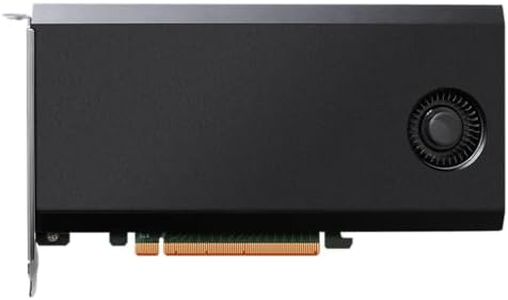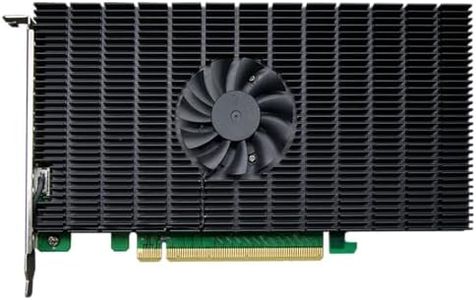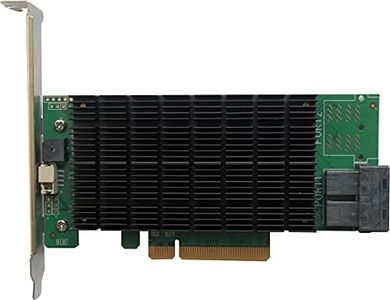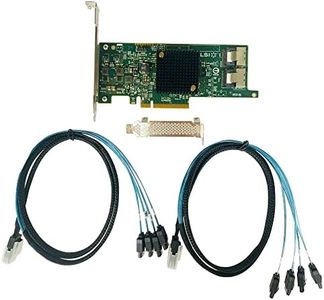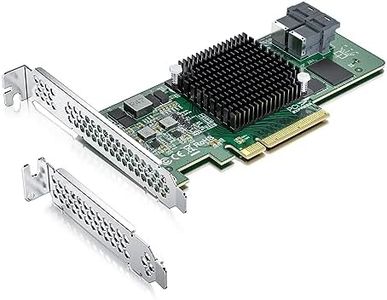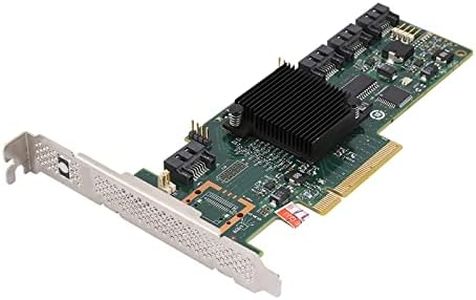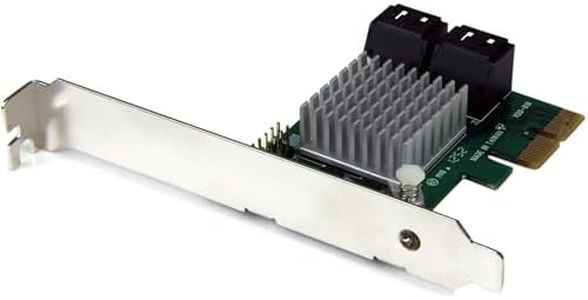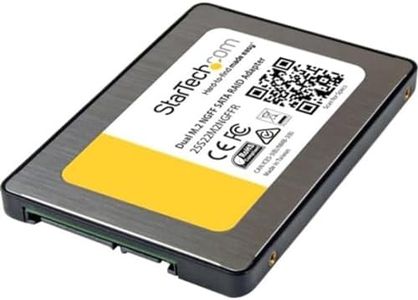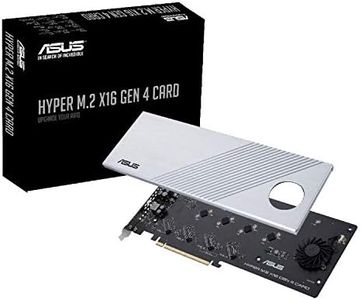We Use CookiesWe use cookies to enhance the security, performance,
functionality and for analytical and promotional activities. By continuing to browse this site you
are agreeing to our privacy policy
10 Best Raid Controllers
From leading brands and best sellers available on the web.Buying Guide for the Best Raid Controllers
Buying a RAID controller is an important decision if you are looking to manage multiple hard drives in an efficient, secure, or high-performance way. Before making a purchase, consider what you want to achieve with your storage system: do you need data redundancy, faster performance, or both? Think about your future expansion needs as well as compatibility with your existing hardware. By understanding the essential specs and how they relate to your needs, you can make an informed choice and set up a storage solution that suits you best.Supported RAID LevelsRAID controllers can support different RAID levels such as RAID 0, 1, 5, 6, 10, and more. Each RAID level has its own strengths when it comes to data protection, performance, and capacity. RAID 0 offers fast performance without redundancy, RAID 1 mirrors data for reliability, and RAID 5 or 6 provide a balance of performance and fault tolerance. When choosing a RAID level, think about whether your top priority is data safety, performance, or something in between. Pick a controller that supports the RAID levels aligning with your needs.
Number of Supported DrivesThis spec tells you how many drives can be connected to the RAID controller simultaneously. Some controllers only support a few drives, while others can handle dozens. Decide how many drives you need to connect now and whether you might add more in the future. For a simple home system, a low-drive controller might be enough. For servers or storage-heavy tasks, look for higher drive support.
Interface TypeThe interface type refers to how the RAID controller connects to your computer or server, such as PCIe, SATA, or SAS. PCIe controllers are common in modern systems and provide high data speeds. Some basic controllers use SATA ports for easy connection to consumer motherboards. SAS interfaces are mostly for enterprise systems and support both SAS and SATA drives. Make sure the controller you pick is compatible with your motherboard's available slots and your drives.
Cache MemoryMany RAID controllers include onboard cache memory, measured in megabytes or gigabytes. Cache helps improve performance by temporarily storing data before it is written to or read from the drives. Controllers with more cache are generally faster, especially in high workload environments. If your storage system will be busy or handle lots of files at once, opt for a controller with more cache. For simple or light storage tasks, smaller or no cache can be sufficient.
Battery Backup Unit (BBU) SupportSome RAID controllers allow you to add a battery backup unit. This feature protects data in the cache during power failures, so nothing is lost. If your system needs to be highly reliable, such as in a business or where uptime is critical, BBU support is worth considering. For a basic home setup or non-critical use, this feature may not be as necessary.
Operating System CompatibilityRAID controllers need to work with your computer’s operating system, such as Windows, Linux, or macOS. Not all controllers have drivers for every operating system, so always check compatibility before buying. Pick a controller with clear support for your intended OS to avoid software headaches and ensure everything runs smoothly.
